What is a seed?
Before discussing seed germination, it's helpful to review the meanings of the terms fruit, seed, and grain. A fruit is an enlarged, ripened ovary with its wall forming the fruit wall, which encloses the seed. The fruit protects the seed and aids in its dispersal.
Examples include mango and pea pod.
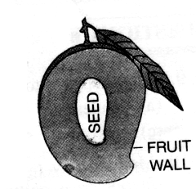
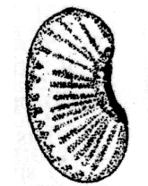
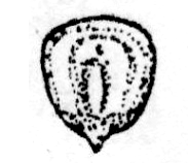
Seed
A seed is a mature ovule. It contains an embryo that can grow into a new plant. The seed coat protects the embryo from physical harm. Examples include bean seeds and peas.
Grain
In plants like maize and wheat, the grain is a fusion of the fruit wall and the seed coat, forming a single protective layer.
Classification and Structure of Seeds
Types of Seeds
Seeds are broadly classified into two types: monocotyledonous and dicotyledonous.
- Monocotyledonous seeds have one cotyledon (seed leaf), such as in maize and grasses.
- Dicotyledonous seeds have two cotyledons, like in peas, grams, and beans.
Seed Size and Variety
Seeds come in various sizes:
- Some are tiny and barely visible to the naked eye, like poppy and orchid seeds.
- Some are large, such as in watermelons, pumpkins, or even mangoes (the stony part).
- The largest seeds are from coconuts and double coconuts.
While the size, shape, and structure of seeds differ among plant species, most seeds share a similar basic structure.
Based on the presence of endosperm, seeds can be classified as follows:
(i) Albuminous (endospermic): In these seeds, the cotyledons are thin and membranous, and the endosperm remains present. Examples include:
- Dicot albuminous seeds: poppy, custard apple.
- Monocot albuminous seeds: cereals, millets, palm.
(ii) Exalbuminous (non-endospermic): In these seeds, the cotyledons store food, becoming thick and fleshy. Examples include:
- Dicot exalbuminous seeds: gram, pea, mango, mustard.
- Monocot exalbuminous seeds: Vallisneria, orchids, amorphophallus.
The Bean Seed
There are various kinds of beans, such as broad bean, lima bean, and French bean, but their seeds generally share the same structure. Most are kidney-shaped with both a convex and a concave side.
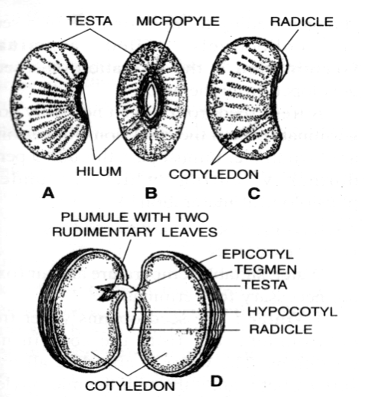
Structure of Bean Seed
A&B – External Structure, C – Testa Removed, D – Seed Cut Open to Show Various Parts
-
Seed Coat (Testa): The outermost, hard, brownish layer that protects the inner parts of the seed from damage and attacks by bacteria, fungi, and insects.
-
Tegmen: A thin inner layer next to the testa, providing additional protection.
-
Hilum: A distinct, white, oval scar on the concave side of the seed, indicating where the ovule was attached to the ovary wall.
-
Micropyle: A tiny pore near the hilum, marking the entry point of the pollen tube. It serves two functions:
- Absorbs water for the embryo during germination.
- Allows the diffusion of respiratory gases for the growing embryo.
-
Cotyledons: Two thick structures beneath the seed coat containing food for the embryo and providing protection. Separating them reveals the tiny embryo.
-
Embryo: Consists of:
- Radicle: Later forms the root.
- Plumule: Later forms the shoot, including a short stem with tiny leaves and a growing point.
(Note: Do not confuse "radicle" with "radical," a chemistry term, to avoid losing marks in exams.)
Maize Grain
-
Maize Grain: A fruit where the fruit wall and seed coat are fused into a protective layer, making it a grain.
-
Embryo Location: Indicated by a small, light-colored oval area on one side of the grain.
-
Endosperm: The major part of the grain, rich in starch, separated from the embryo by a thin epithelial layer. The outermost layer of the endosperm is rich in protein and called the aleurone layer.
-
Embryo: Contains a single cotyledon (scutellum), a radicle, and a plumule.
- Radicle: Located towards the pointed end, enclosed in a protective sheath called the coleorhiza.
- Plumule: Located towards the upper broader side, enclosed in a protective sheath called the coleoptile.
-
Monocotyledonous and Endospermic: Maize grain is a type of grain with one cotyledon and an endosperm. Examples include rice, wheat, and oats.
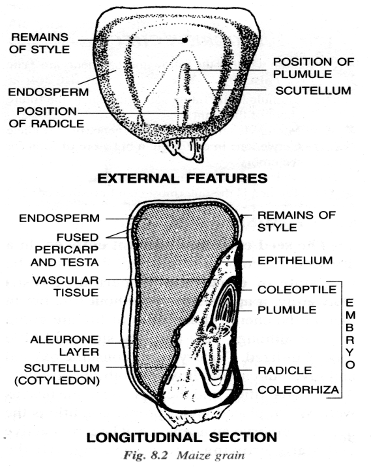
Major Differences between Bean Seed and Maize Grain
| BEAN | MAIZE |
|
One cotyledon (scutellum) Large endosperm present. Small embryo. Plumule leaves rolled. Plumule very small. Hilum and micropyle not visible. The seed wall and the fruit wall fused to form a single grain with no separate seed. |
Seed in Biology: Types, Structure, Bean Seed, and Maize Grain
Introduction
Seeds are the foundation of plant reproduction and agriculture. In biology, a seed is a fertilized and matured ovule that contains an embryo, stored food, and a protective covering. It represents the beginning of a new plant and ensures the continuity of plant species from one generation to the next. Seeds have been central not only to natural ecosystems but also to human civilization, serving as the basis of agriculture, food production, and biodiversity.
What is a Seed?
A seed is a reproductive structure that develops after fertilization in seed-bearing plants (angiosperms and gymnosperms). It contains a plant embryo, a reserve of nutrients, and a protective seed coat. Under favorable conditions, the seed germinates to form a new plant.
Key features of a seed:
-
Formed from a fertilized ovule.
-
Has an embryo that grows into a new plant.
-
Contains stored food for early development.
-
Protected by a seed coat.
-
Capable of dormancy to survive harsh conditions.
Functions of a Seed
-
Reproduction – ensures continuity of plant life.
-
Food storage – provides nutrition for the embryo during germination.
-
Dispersal – seeds help plants spread to new areas.
-
Dormancy – allows seeds to survive unfavorable conditions.
-
Economic importance – seeds are the primary source of food for humans and animals (grains, pulses, nuts, etc.).
Structure of a Seed
Though seeds differ across species, the basic structure includes:
-
Seed Coat (Testa & Tegmen)
-
Outermost protective covering of the seed.
-
Testa is the outer coat; tegmen is the inner coat.
-
Protects embryo from mechanical damage, pathogens, and water loss.
-
-
Embryo
-
The young plant inside the seed.
-
Consists of:
-
Radicle → develops into root.
-
Plumule → develops into shoot.
-
Cotyledons → seed leaves, storing or absorbing food.
-
-
-
Endosperm (in some seeds)
-
Nutritive tissue formed after fertilization.
-
Provides stored food (starch, proteins, oils) to embryo.
-
-
Hilum and Micropyle
-
Hilum: scar on seed coat marking attachment point to fruit.
-
Micropyle: small pore for water and gas entry during germination.
-
Types of Seeds
Based on Cotyledons
-
Monocotyledonous Seeds (Monocots)
-
Have one cotyledon.
-
Examples: Maize, rice, wheat.
-
-
Dicotyledonous Seeds (Dicots)
-
Have two cotyledons.
-
Examples: Bean, pea, groundnut.
-
Based on the Presence of Endosperm
-
Endospermic (Albuminous) Seeds
-
Retain endosperm as food storage.
-
Examples: Maize, rice, wheat, castor.
-
-
Non-endospermic (Exalbuminous) Seeds
-
Endosperm consumed during development; food stored in cotyledons.
-
Examples: Beans, peas, groundnuts.
-
Based on Germination Behavior
-
Orthodox Seeds
-
Can survive drying and long storage.
-
Example: Rice, wheat.
-
-
Recalcitrant Seeds
-
Cannot withstand drying; must germinate quickly.
-
Example: Mango, cocoa.
-
Detailed Study of Bean Seed (Dicot)
The bean seed is a typical example of a dicotyledonous, non-endospermic seed.
Structure of Bean Seed
-
Seed Coat
-
Testa: thick outer layer.
-
Tegmen: thin inner layer.
-
Protects embryo.
-
-
Hilum
-
Oval scar marking attachment point.
-
-
Micropyle
-
Tiny pore near hilum allowing water entry.
-
-
Embryo
-
Cotyledons (2): large, fleshy structures storing food.
-
Radicle: develops into primary root.
-
Plumule: develops into shoot.
-
Features of Bean Seed
-
Dicotyledonous.
-
Non-endospermic (food stored in cotyledons).
-
Used as food (rich in proteins).
Detailed Study of Maize Grain (Monocot)
The maize grain is a monocotyledonous, endospermic seed. It is also a caryopsis, where the seed coat is fused with the fruit wall.
Structure of Maize Grain
-
Seed Coat and Pericarp
-
Fused together to form a protective layer.
-
-
Endosperm
-
Large portion of grain storing starch.
-
Contains an outer protein-rich layer called Aleurone layer.
-
-
Embryo
-
Situated on one side of the grain.
-
Consists of:
-
Cotyledon (Scutellum): single cotyledon absorbing food.
-
Radicle: develops into root, protected by a sheath called Coleorhiza.
-
Plumule: develops into shoot, protected by Coleoptile.
-
-
Features of Maize Seed
-
Monocotyledonous.
-
Endospermic (food stored in endosperm).
-
Economically important as a staple food and livestock feed.
Differences Between Bean Seed and Maize Grain
| Feature | Bean Seed (Dicot) | Maize Grain (Monocot) |
|---|---|---|
| Cotyledons | Two | One |
| Endosperm | Absent (food in cotyledons) | Present (food in endosperm) |
| Seed coat | Separate from fruit wall | Fused with fruit wall |
| Example | Bean, pea, groundnut | Maize, wheat, rice |
Importance of Seeds in Biology
-
Agricultural Importance
-
Basis of crop cultivation.
-
Provide grains, pulses, oilseeds, and nuts.
-
-
Ecological Importance
-
Seeds aid in plant dispersal by wind, water, or animals.
-
Maintain plant diversity.
-
-
Economic Importance
-
Source of food, oils, beverages, spices, and fodder.
-
Seeds like coffee, cocoa, and mustard have commercial value.
-
-
Survival Mechanism
-
Seeds ensure dormancy, helping plants survive harsh climates.
-
Conclusion
Seeds are one of the most important structures in biology, serving as the reproductive unit of seed-bearing plants. They contain an embryo, stored nutrients, and protective layers to ensure survival and germination. The bean seed (dicot, non-endospermic) and maize grain (monocot, endospermic) are classic examples illustrating the diversity of seed structures. While bean stores food in cotyledons, maize relies on endosperm for nourishment. Understanding seeds is essential not only for biology but also for agriculture, food security, and ecology. Seeds symbolize the continuity of life, carrying the potential for future generations of plants and sustaining life on Earth.